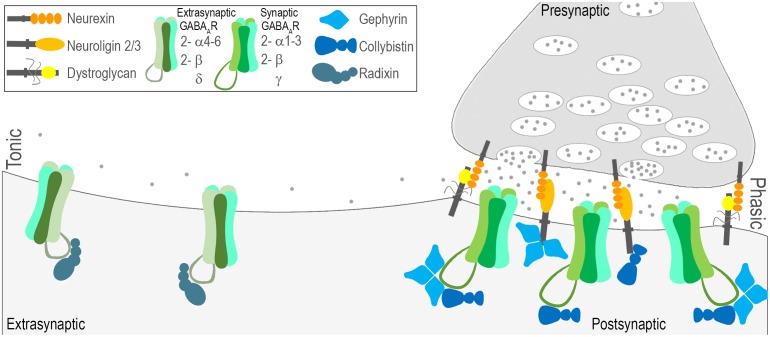FIGURE 2.
Molecular characterization of phasic and tonic modes of inhibition. Fast inhibitory synaptic transmission, also known as phasic inhibition, is governed by GABAAR’s with relatively low sensitivity to GABA densely clustered at sites opposing interneuron terminal boutons. Several general factors have been identified that play a role in establishing the contact between pre and post (neurexin-neuroligin2/3; neurexin-dystroglycan), and/or retaining receptors at these sites (gephyrin, collybistin). Phasic GABAARs are most commonly composed of 2-α1-3, 2-β, and a γ subunit and are sensitive to benzodiazepines. Tonic inhibition is governed by GABAAR’s that reside outside of synaptic sites, are highly sensitive to GABA, and are most commonly composed of 2-α4-6, 2-β, and a δ subunit. Much less is known about the mechanisms that localize extrasynaptic GABAARs, but radixin is implicated.

